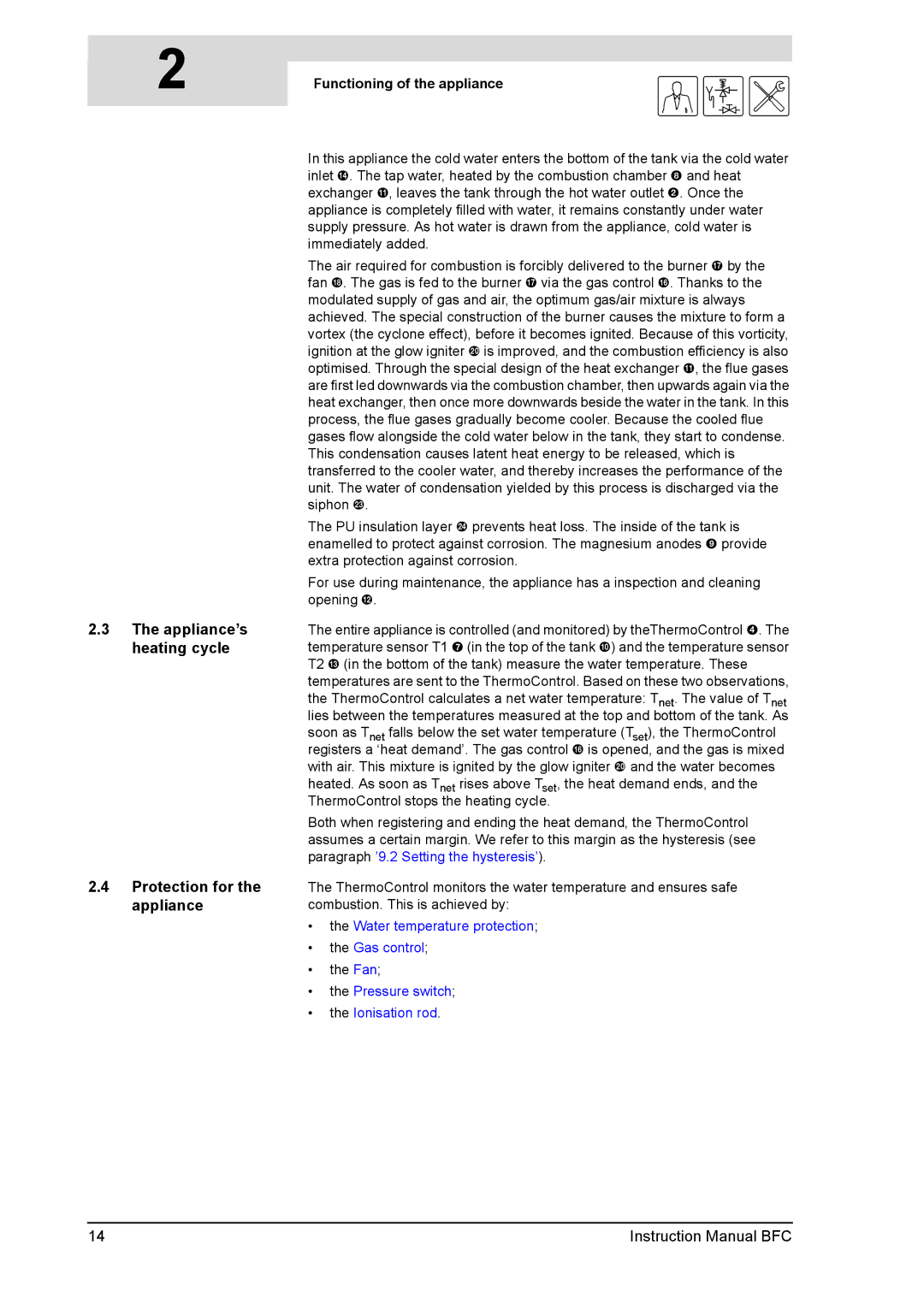
2
Functioning of the appliance
gis
2.3The appliance’s heating cycle
2.4Protection for the appliance
In this appliance the cold water enters the bottom of the tank via the cold water inlet n. The tap water, heated by the combustion chamber h and heat exchanger k, leaves the tank through the hot water outlet b. Once the appliance is completely filled with water, it remains constantly under water supply pressure. As hot water is drawn from the appliance, cold water is immediately added.
The air required for combustion is forcibly delivered to the burner q by the fan r. The gas is fed to the burner q via the gas control p. Thanks to the modulated supply of gas and air, the optimum gas/air mixture is always achieved. The special construction of the burner causes the mixture to form a vortex (the cyclone effect), before it becomes ignited. Because of this vorticity, ignition at the glow igniter t is improved, and the combustion efficiency is also optimised. Through the special design of the heat exchanger k, the flue gases are first led downwards via the combustion chamber, then upwards again via the heat exchanger, then once more downwards beside the water in the tank. In this process, the flue gases gradually become cooler. Because the cooled flue gases flow alongside the cold water below in the tank, they start to condense. This condensation causes latent heat energy to be released, which is transferred to the cooler water, and thereby increases the performance of the unit. The water of condensation yielded by this process is discharged via the siphon w.
The PU insulation layer x prevents heat loss. The inside of the tank is enamelled to protect against corrosion. The magnesium anodes i provide extra protection against corrosion.
For use during maintenance, the appliance has a inspection and cleaning opening l.
The entire appliance is controlled (and monitored) by theThermoControl d. The temperature sensor T1 g (in the top of the tank j) and the temperature sensor T2 m (in the bottom of the tank) measure the water temperature. These temperatures are sent to the ThermoControl. Based on these two observations, the ThermoControl calculates a net water temperature: Tnet. The value of Tnet lies between the temperatures measured at the top and bottom of the tank. As soon as Tnet falls below the set water temperature (Tset), the ThermoControl registers a ‘heat demand’. The gas control p is opened, and the gas is mixed with air. This mixture is ignited by the glow igniter t and the water becomes heated. As soon as Tnet rises above Tset, the heat demand ends, and the ThermoControl stops the heating cycle.
Both when registering and ending the heat demand, the ThermoControl assumes a certain margin. We refer to this margin as the hysteresis (see paragraph ’9.2 Setting the hysteresis’).
The ThermoControl monitors the water temperature and ensures safe combustion. This is achieved by:
•the Water temperature protection;
•the Gas control;
•the Fan;
•the Pressure switch;
•the Ionisation rod.
14 | Instruction Manual BFC |
